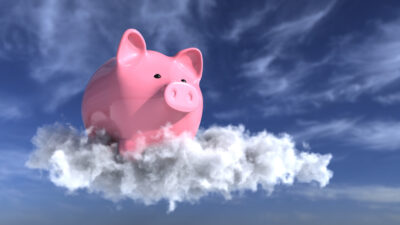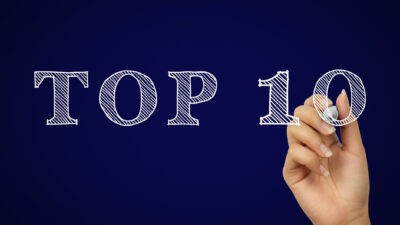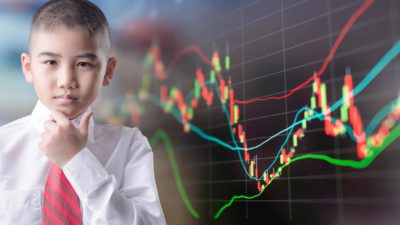Scores of ASX 200 companies are in the midst of share buyback programs, and some of them are doing it in lieu of paying dividends.
Among them are Qantas Airways Limited (ASX: QAN), Commonwealth Bank of Australia (ASX: CBA), AMP Ltd (ASX: AMP), Insurance Australia Group Ltd (ASX: IAG), Nine Entertainment Co Holdings Ltd (ASX: NEC), Whitehaven Coal Ltd (ASX: WHC), and Santos Ltd (ASX: STO).
So, why are so many companies doing this?
What's a share buyback?
A buyback is when a company repurchases some of its own shares from shareholders. The company then cancels those shares, which reduces the overall number of shares on issue.
The greatest benefit is that future profits are shared across a smaller pool of shares.
This should boost the earnings per share (EPS) for everyone, which is why shareholders generally show enthusiasm for buyback announcements.
Well, most of the time. I'll explain this later.
Why are ASX 200 companies running share buybacks?
Capital management is the prime reason for doing a share buyback.
Companies can be motivated to deploy excess capital because it's simply not a good look to have too much spare cash on the books.
Kinda makes shareholders cranky.
They like to see the majority of excess cash either distributed to them (via dividends or buybacks) or deployed to expand the business and grow its earnings.
The typical scenario for a share buyback is a company with excess cash on its books buying its stock back when it thinks the share price is undervalued.
A bunch of factors led to many ASX 200 companies announcing buybacks in the second half of 2022.
Soaring commodity prices delivered record earnings to energy and mining shares.
On top of that, a hangover of stimulus payments coupled with better-than-expected performances during COVID left many companies with surplus cash.
And share prices fell.
The S&P/ASX 200 Index (ASX: XJO) fell by 5.5% over 2022, thanks to rising inflation and interest rates.
Many ASX 200 shares fell harder, sparking the opportunity for some companies to rebuy their stock, on the cheap, for longer-term benefits.
Many companies announced buybacks in the August reporting season of 2022. A lot of these buyback programs are still underway today.
At the time, the head of research at K2 Asset Management George Boubouras explained why so many ASX 200 companies were doing this.
Boubouras said (courtesy of Australian Financial Review (AFR)):
We went through a robust reporting period for fiscal 2022 and now a very challenging reporting period for fiscal 2023.
It's good to use [buybacks] given equity valuations are not expensive. … doing it now with the uncertainty of earnings for the fiscal year ahead makes a little bit of sense, as you're not paying a lot of money for your future earnings.
In October 2022, Bloomberg reported that 40 companies had announced buybacks, up 74% on 2021.
What are the benefits for shareholders?
Over time, a buyback will typically improve the EPS for everyone. Capital gains and dividends are shared across a smaller pool of shares. Everyone's happy.
It also lowers the company's price-to-earnings (P/E) ratio, which makes it more attractive to investors, which in turn can boost demand and raise the share price.
Just announcing a share buyback can send the share price northward.
It's typically interpreted as a big signal that the company is financially healthy and that management has enough confidence in the future to reinvest today.
Warren Buffett loves a buyback
The world's most revered investor, Warren Buffett is a big fan of share buybacks.
He reckons if a company has no attractive acquisitions available, it might as well buy back some of its own stock if the share price is attractive.
Buffett says:
… disciplined repurchases are the surest way to use funds intelligently: It's hard to go wrong when you're buying dollar bills for 80¢ or less.
He argues that a share buyback returns value to shareholders in a tax-free way.
What are the negatives for shareholders?
Companies sometimes undertake buybacks in lieu of paying dividends or paying larger dividends.
That's the case with James Hardie Industries plc (ASX: JHX), which scrapped its dividend in November 2022 in favour of a year-long on-market buyback program worth up to US$200 million.
James Hardie CFO Jason Miele explained the rationale:
Today we adjusted our Capital Allocation Framework to better match who we are: a growth company.
The number one and primary focus of our Capital Allocation Framework is to invest in organic growth; our 5-year average Adjusted ROCE of 36% is proof that investing in our growth should be our number one use of capital.
Returning excess capital to shareholders via a share buyback rather than a dividend provides a growth company the optimal flexibility to ensure investment in organic growth is prioritized while maintaining financial strength and flexibility through cycles.
Through these cycles we will target an average leverage ratio below 2.0x.
The James Hardie buyback will end on 31 October.
The choice to do a buyback instead of paying a dividend isn't so great for income investors.
That's the biggest negative.
This is particularly the case for retirees, who are often relying on their ASX shares to fund their living expenses.
Dividends are paid quickly but the benefits of buybacks take time to flow through to investors.
This is why many Australian investors prefer dividends to share buybacks, especially if their companies pay franking credits.
Our unique franking system makes ASX 200 shares a very tax-effective form of investment return.









